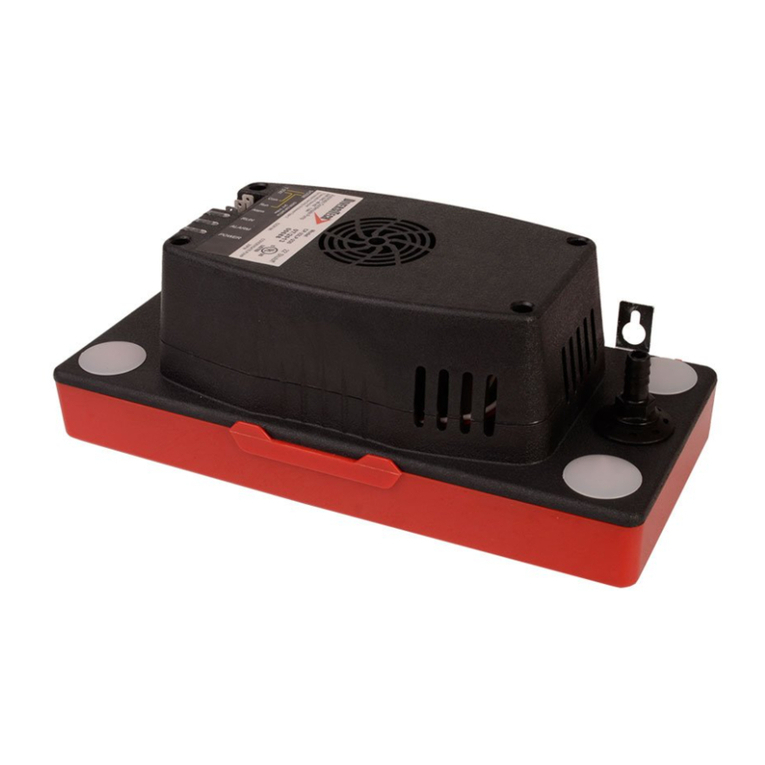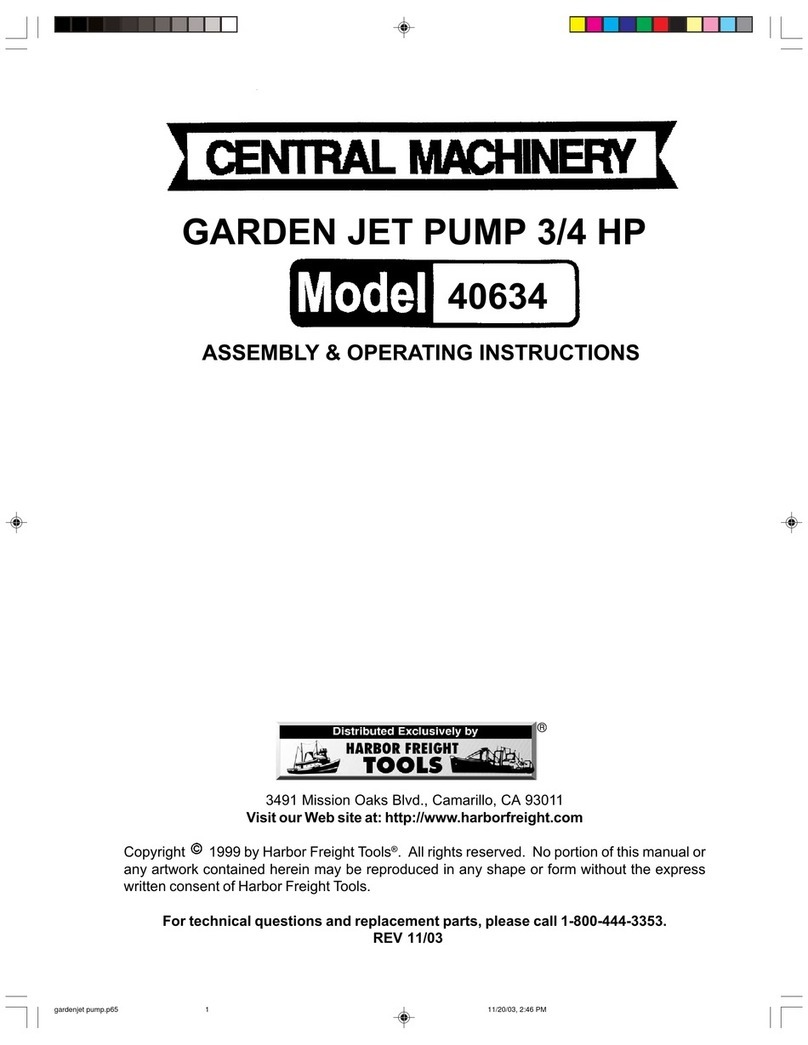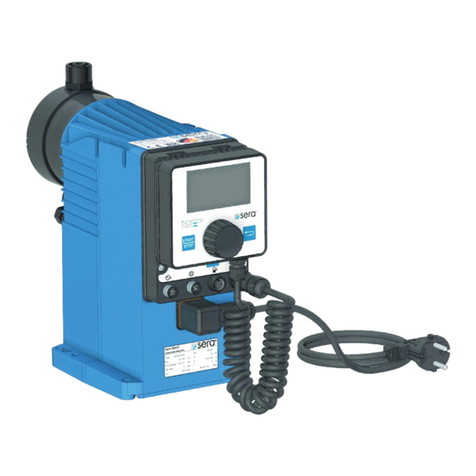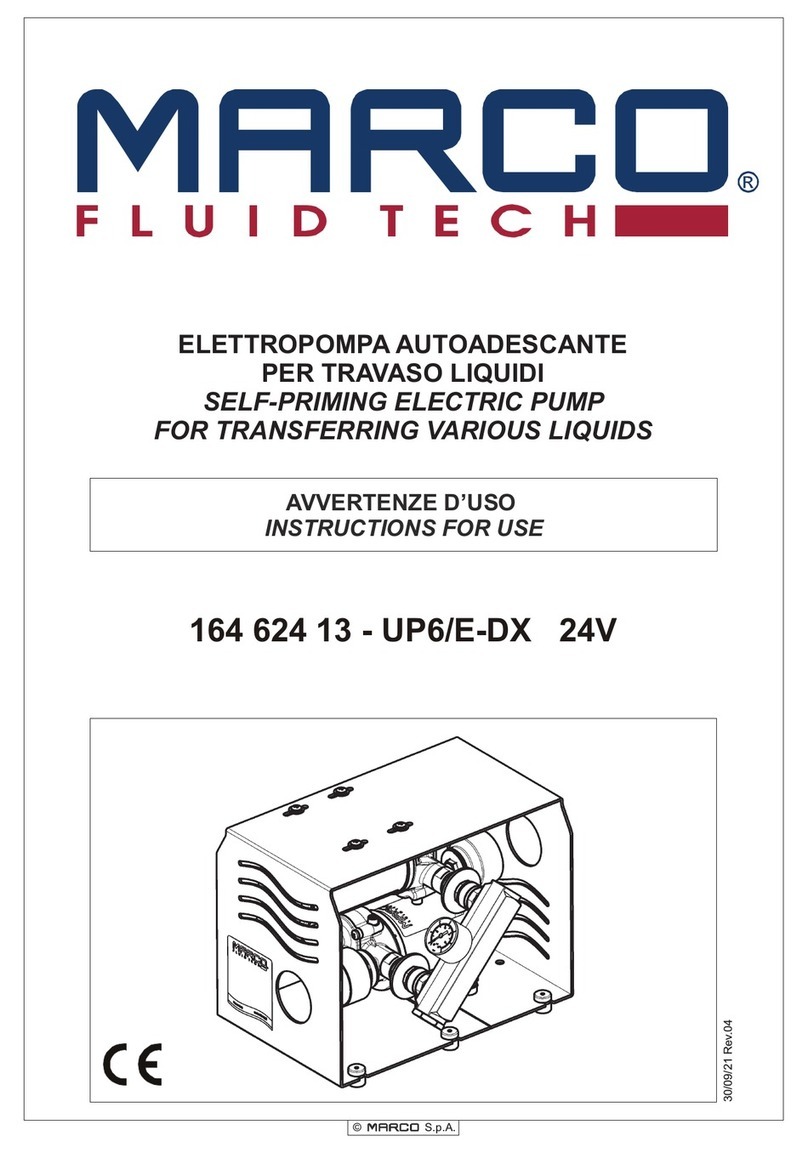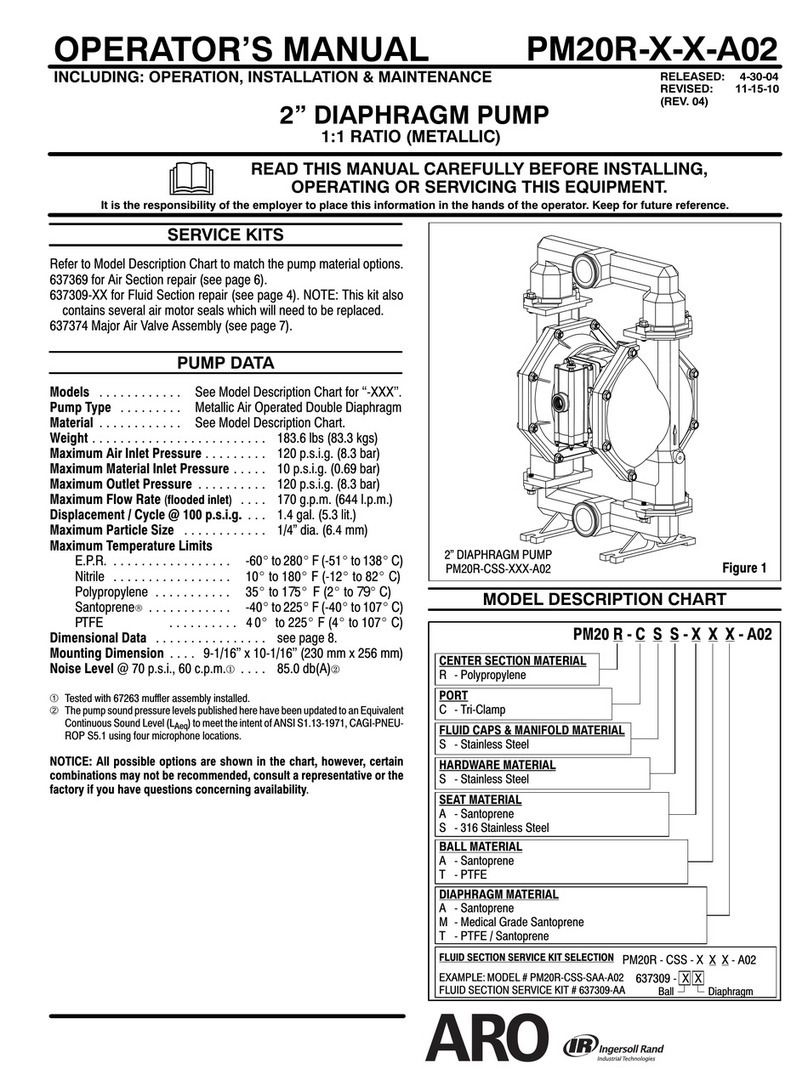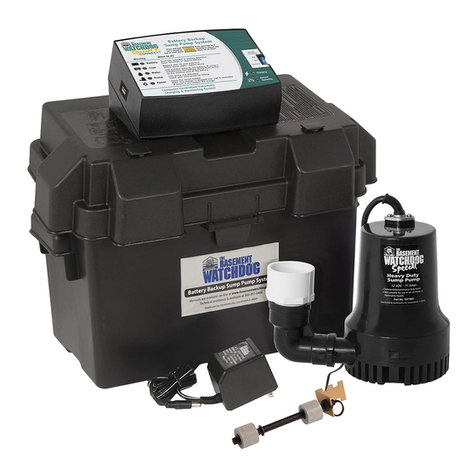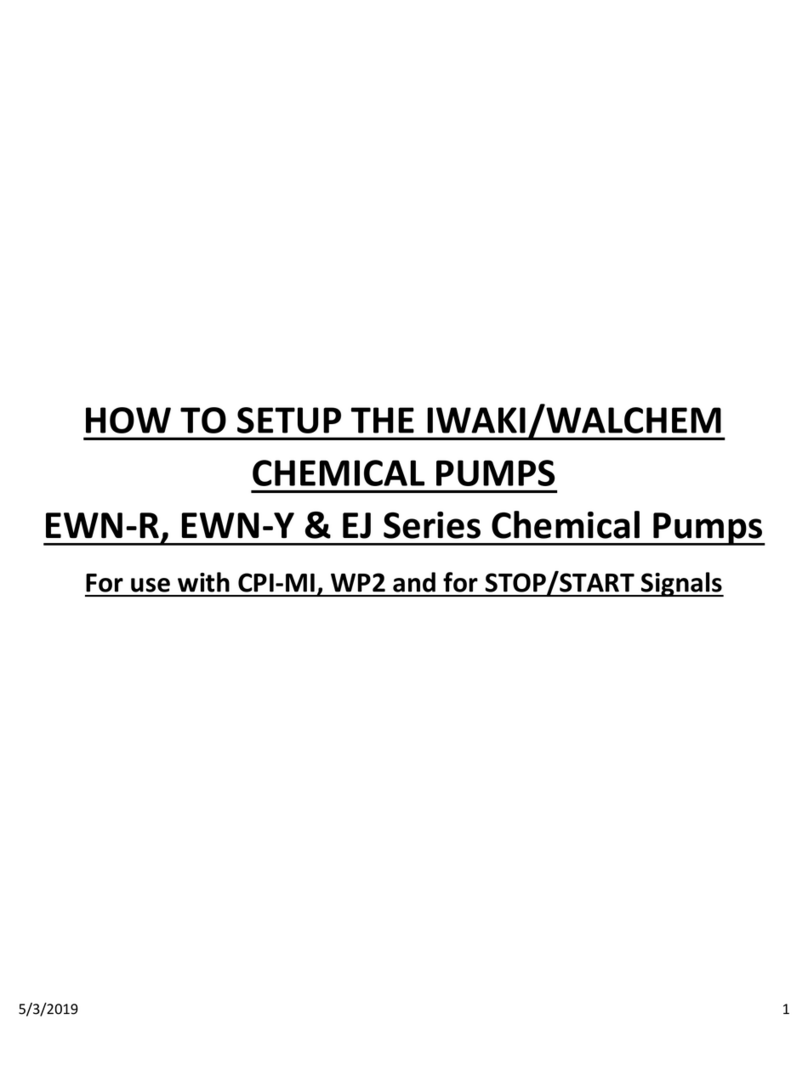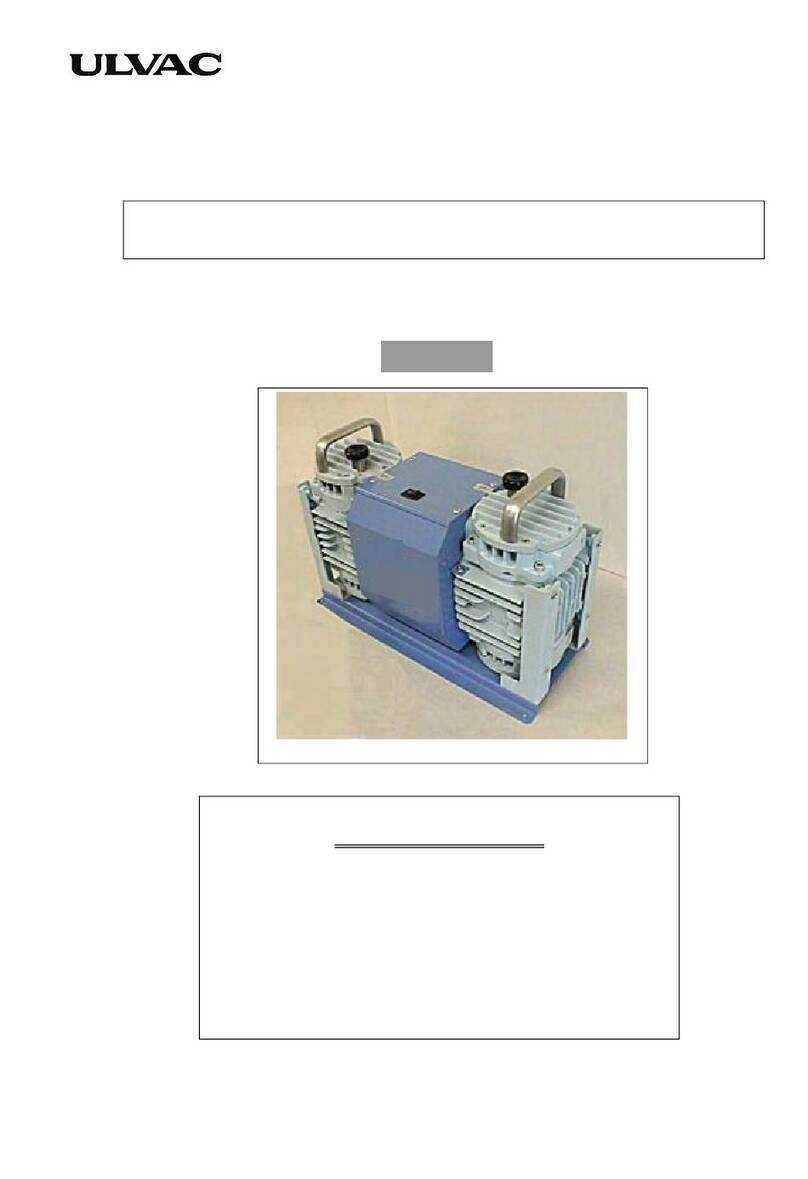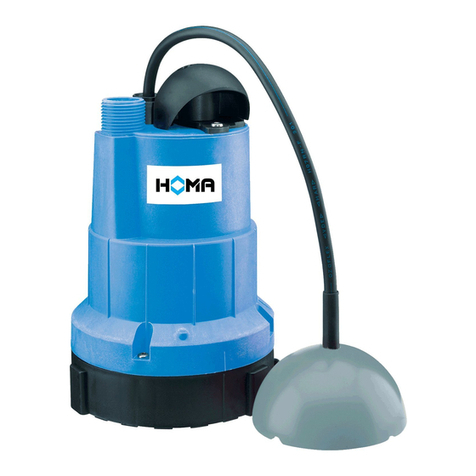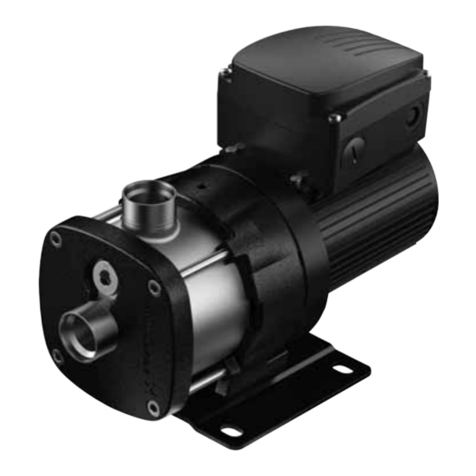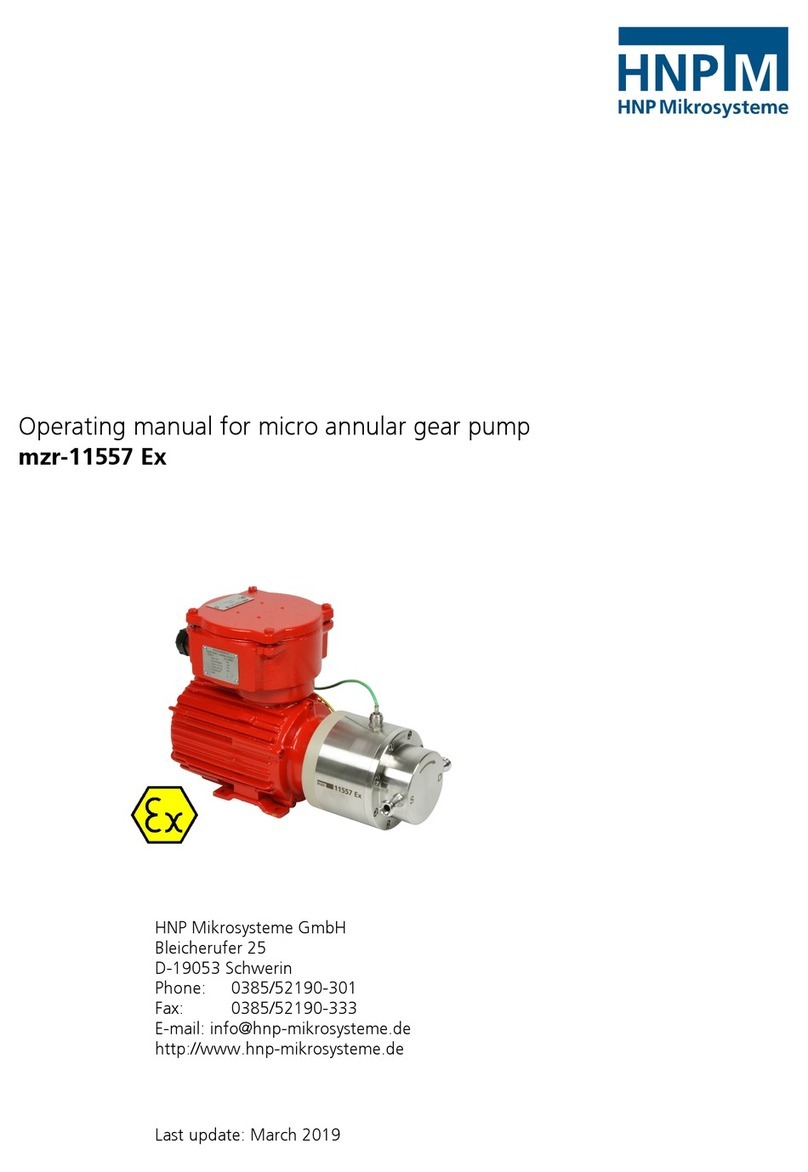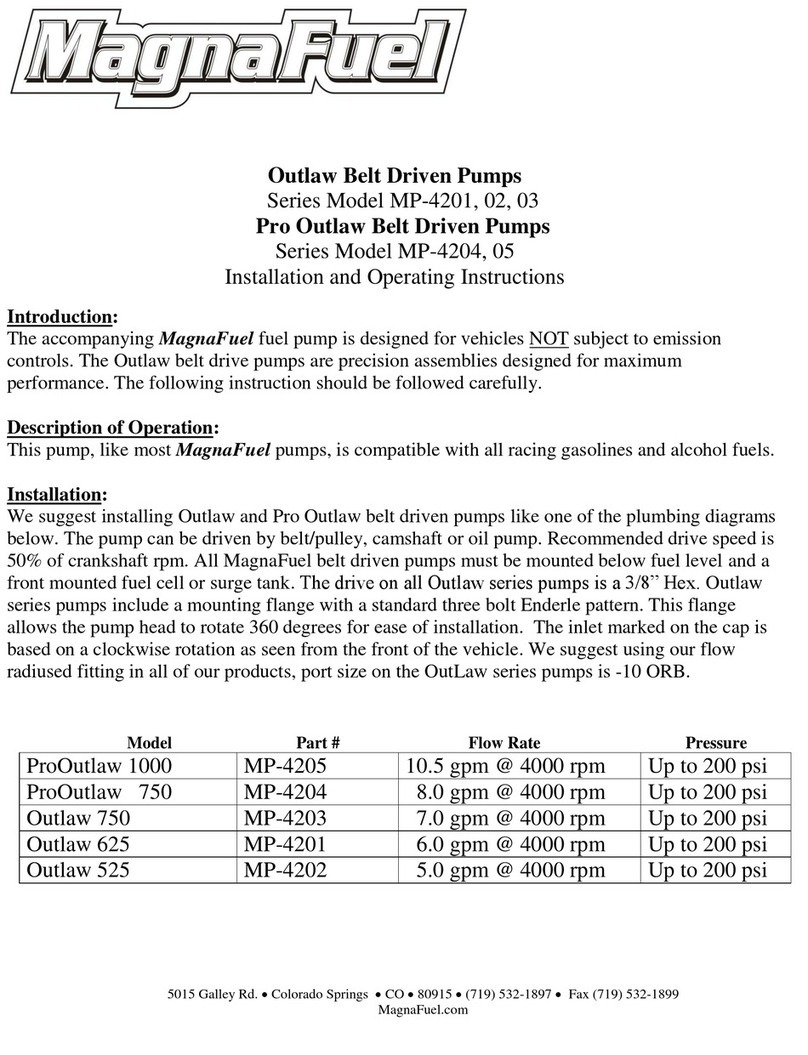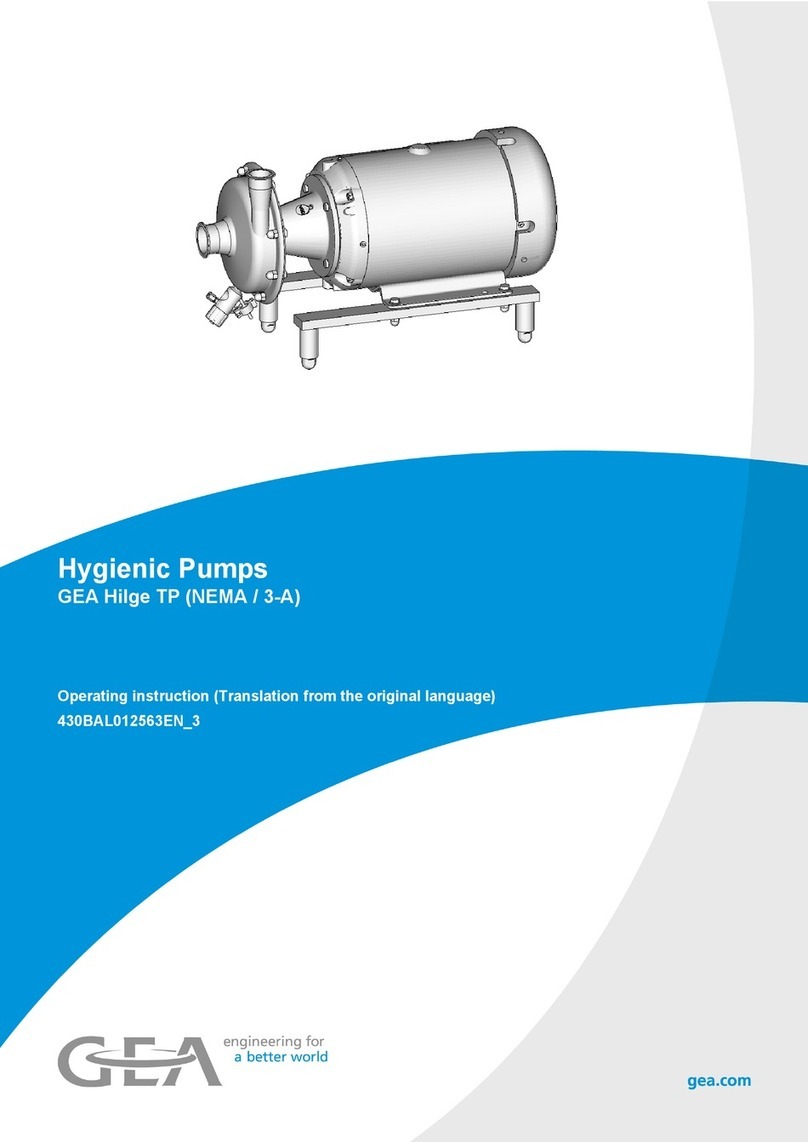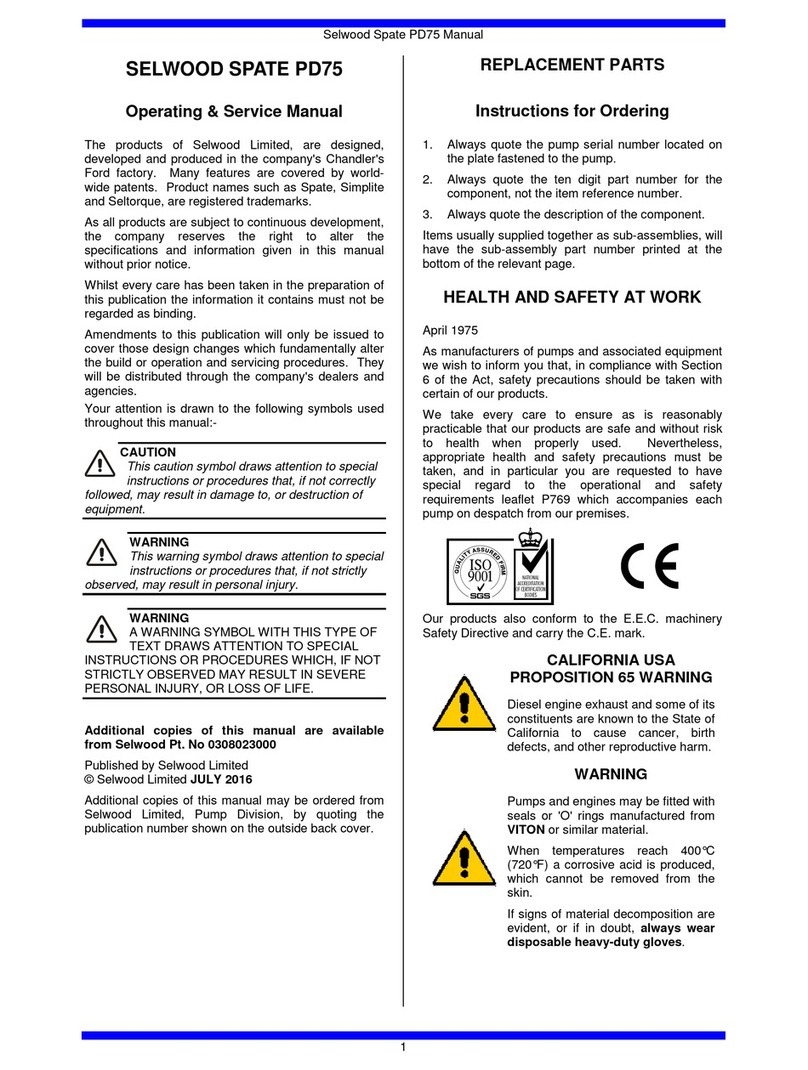
Selwood Seltorque S100 Manual
10
3. 5.2.2 Peel Valve (B21) Instructions 3 to 11.
Remove all deposited solids that would interfere
with the free movement of the mechanism,
obstruct the passage of air across the port plate
holes, or inhibit the flow of water (through the
holes in the upper
4. Once it is established that all components are in a
satisfactory condition and are free from scale,
replace separator cap sub-assembly in
accordance with Section 0 Float (B11)
Instruction 6. Any re-assembly work carried out
on the peel valve assembly should be in
accordance with Section 5.2.2 Peel Valve (B21)
commencing at Instruction 1.
Impeller, Mechanical Seal and Delivery Valve
Maintenance
5.3.1 Impeller (C04)
Generally speaking, it is only necessary to remove the
impeller if the existing component has become
severely abraded, or if access to other rotating parts is
required.
To remove and replace, proceed as follows:
1. Remove air hose item (A01) from separator cap
(B01), after loosening hose clip (A02).
2. Remove nuts (A11) and washers (A12), and lift off
separator cap (B01) complete with peel
valve/upper diffuser assembly, (B01) to (B21)
inclusively.
3. Lift separator body (B22) complete with lower
diffuser (B24) off suction tube (B27) allowing
(dome) nuts (B29) and spring washers (B30) to be
released.
4. Withdraw suction tube (B27) and gasket (B28)
after removing nuts (B29) and associated spring
washers (B30).
5. Drain oil from flushing chamber by removing filler
cap assembly (D08) and drain plug (D34). The
condition of the oil will indicate whether or not the
mechanical seal has been functioning correctly. If
contamination is evident, the mechanical seal
must be replaced in accordance with Section 0
commencing at Instruction 1.
6. Remove impeller screw (C01) and washers (C02)
and (C03), and withdraw impeller (C04) from drive
shaft (D17). To remove the screw, it will be
necessary to lock the impeller by means of a
wooden block wedged between the impeller
blades and pump body (C09).
NOTE: An impeller removal tool (Part No.
0015WRS781) is available to facilitate removal of the
impeller - see Section 0.
7. Removal of the impeller will allow the mechanical
seal spring to expand. Do NOT touch the shaft
sleeve (C06) or spring if the mechanical seal has
been functioning correctly and only the impeller is
to be replaced. Premature failure of the
mechanical seal assembly could result if the seal's
faces are disturbed by moving the shaft sleeve.
8. When fitting a new impeller, ensure that key (C05)
is not a tight fit in the impeller keyway. If
necessary, remove very small amounts of metal
from the sides of the key to achieve a close sliding
fit that will not allow any perceptible rotation of the
impeller on the shaft, and yet allow the impeller to
slide into place by hand. Apply Rustilo 431 grease
(or approved equivalent) to all impeller mounting
surfaces.
9. Check condition of nylon patch on impeller screw
(C01). It is essential that this screw should be stiff
to turn in the thread of the shaft. On no account
use a screw that moves freely. Use a new screw
if the head of the original component is abraded or
if the screw is not a friction fit in the shaft thread.
Do NOT lubricate these threads.
10. Ensuring that the mechanical seal spring is in
position, replace impeller (C04), washer (C03) two
washers (C02) with concave faces towards
impeller and impeller screw (C01), and tension
screw to 60lb ft (8.3kgf m) torque. It is essential
that this screw is correctly tensioned. During this
operation, it will be necessary to lock the impeller
by means of a wooden block wedged between the
impeller blades and pump body (C09). Remove
block after use.
11. Use Rustilo 431 on the inside of the pump
register. Fit new gasket (B28), position suction
tube on studs, fit washers (B30) and fully tighten
nuts (B29).
12. Renew gasket (B25), reposition separator body
sub-assembly on suction tube, and fit separator
cap assembly. Assemble washers (A12) and nuts
(A11) and alternatively tighten each nut a small
amount to ensure that the cap is pulled down
evenly. Do NOT over-tighten.
13. Reposition air hose (A01) on spigot of separator
cap (B01) and tighten hose clip (A02).
14. Replace drain plug (D34) using PTFE tape as a
sealant, and fill flushing chamber with new oil to
level of plug. Replace plug and 'O' ring (D08) and
(D07). Refer to Section 3.1 Pump Lubrication for
details of the oil required for the flushing chamber.
5.3.2 Mechanical Seal (C08)
The mechanical seal should be replaced if the flushing
chamber oil continuously leaks into the pumped fluid,
or if the oil becomes contaminated with the product.
This latter condition is sometimes indicated by leakage
of fluid out of a breather cap (D12). Under extreme
conditions, pumped fluid may be seen escaping out of
the vent at the bottom of flushing chamber (D33).
In the event of abrasive materials being detected in the
oil, it is likely that lip seal (D04) will have become worn
and necessitate replacement in accordance with Section
5.4.3 Bearings and Lip Seal (D15, D18 and D04).
Daily checks on oil condition should ensure that seal
failure is detected before damage occurs to related
components. If the mechanical seal leaks, proceed as
follows:
1. Drain oil from flushing chamber (D33) by removing
its filler cap (D08) and drain plug (D34).
2. Remove impeller (C04) in accordance with
Section 0 Impeller (C04) Instructions 1 to 7
inclusively, and remove impeller key (C05).
3. Withdraw shaft sleeve (C06) together with rotating
mechanical seal parts and spring. It is likely that























